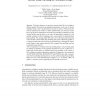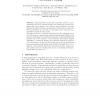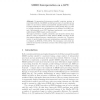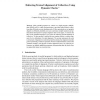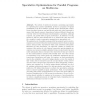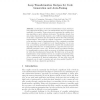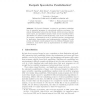LCPC
2009
Springer
14 years 4 months ago
2009
Springer
This paper improves our previous research effort [1] by providing an efficient method for kernel loop unrolling minimisation in the case of already scheduled loops, where circular...
LCPC
2009
Springer
14 years 4 months ago
2009
Springer
Abstract. Current hardware trends place increasing pressure on programmers and tools to optimize scientific code. Numerous tools and techniques exist, but no single tool is a pana...
LCPC
2009
Springer
14 years 4 months ago
2009
Springer
Abstract. Intervals are a new, higher-level primitive for parallel programming with which programmers directly construct the program schedule. Programs using intervals can be stati...
LCPC
2009
Springer
14 years 4 months ago
2009
Springer
Programming heterogeneous parallel computer systems is notoriously difficult, but MIMD models have proven to be portable across multi-core processors, clusters, and massively paral...
LCPC
2009
Springer
14 years 4 months ago
2009
Springer
Abstract. Many parallel programs are written in a single-program, multipledata (SPMD) style, in which synchronization is provided using collective operations that all threads execu...
LCPC
2009
Springer
14 years 4 months ago
2009
Springer
PC grids represent massive computation capacity at a low cost, but are challenging to employ for parallel computing because of variable and unpredictable performance and availabili...
LCPC
2009
Springer
14 years 4 months ago
2009
Springer
The advent of multicores presents a promising opportunity for exploiting fine grained parallelism present in programs. Programs parallelized in the above fashion, typically involv...
LCPC
2009
Springer
14 years 4 months ago
2009
Springer
Abstract. In this paper, we describe transformation recipes, which provide a high-level interface to the code transformation and code generation capability of a compiler. These rec...
LCPC
2009
Springer
14 years 4 months ago
2009
Springer
Abstract. We describe Fastpath, a system for speculative parallelization of sequential programs on conventional multicore processors. Our system distinguishes between the lead thre...
PVM
2004
Springer
14 years 5 months ago
2004
Springer
We describe the use of MPI for writing system software and tools, an area where it has not been previously applied. By “system software” we mean collections of tools used for s...
